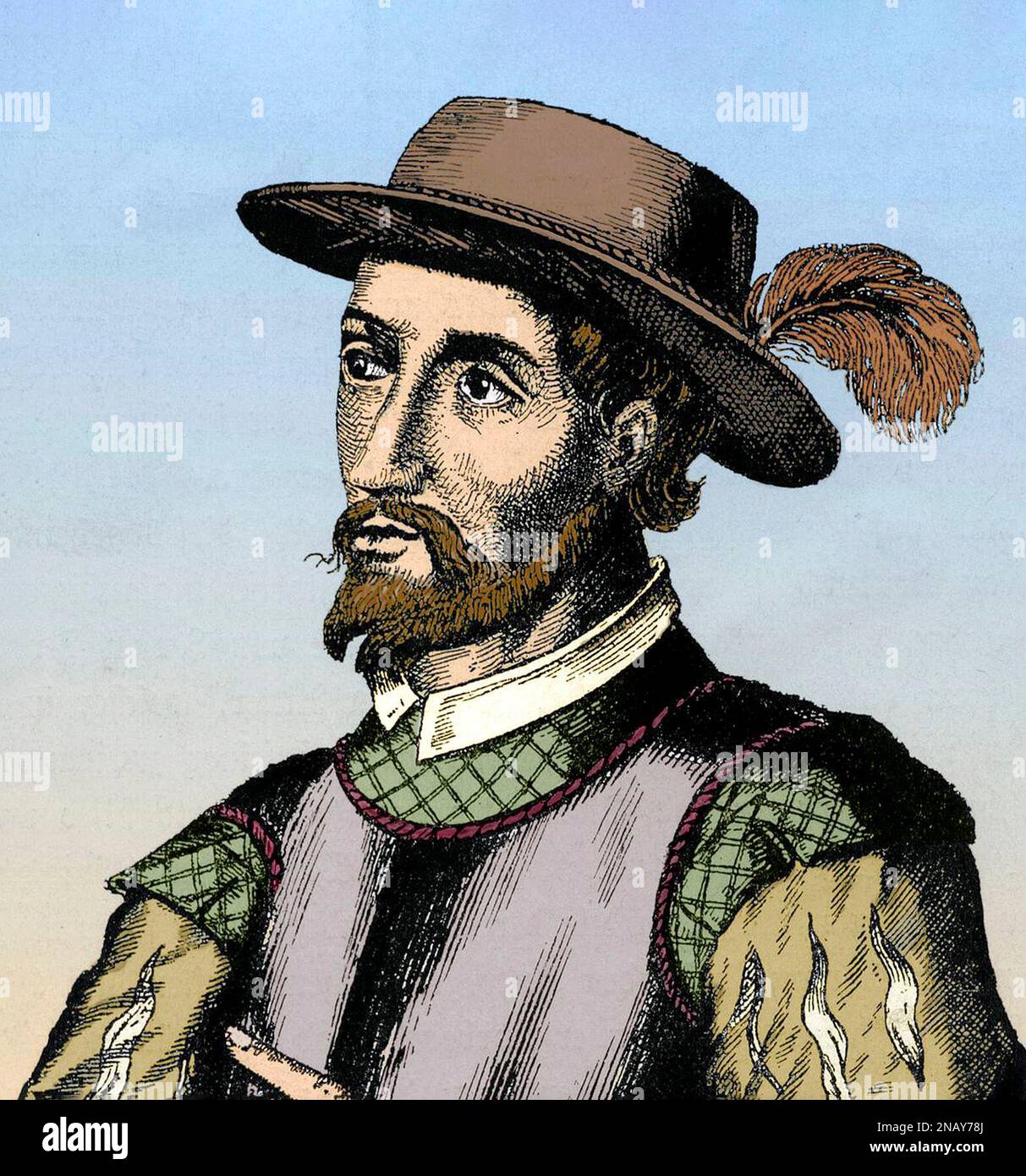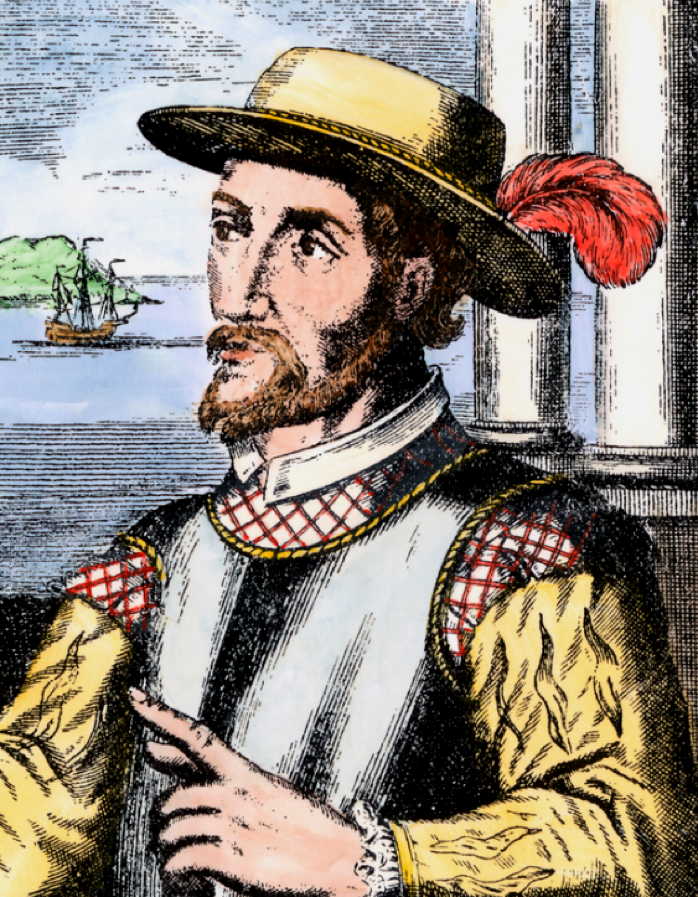
The Echoes of Bimini: Juan Ponce de León and America’s Enduring Legends
America, a land forged in discovery and steeped in ambition, has always been fertile ground for legends. From the creation myths of its indigenous peoples to the tall tales of the frontier, these stories form a crucial, often romanticized, layer beneath the hard bedrock of historical fact. They are the whispers in the wind, the shadows in the palmetto groves, and the shimmering mirages on distant horizons that have beckoned explorers and settlers for centuries. Among the most potent and enduring of these narratives is that of Juan Ponce de León and his fabled quest for the Fountain of Youth, a tale that perfectly encapsulates the intricate dance between historical reality and the powerful myths that define the American experience.
For many, the name Juan Ponce de León conjures an image of an aging conquistador, desperate for eternal youth, tirelessly scouring the sun-drenched wilds of Florida for a miraculous spring. This image, deeply embedded in popular culture, is a testament to the magnetic pull of legends. Yet, the historical Ponce de León was a figure far more complex and pragmatic than the myth suggests, a seasoned warrior and ambitious colonial administrator whose true motivations were rooted in the very real pursuits of land, power, and wealth that drove the Spanish Empire.
Born in 1474 in Santervás de Campos, Spain, Ponce de León was a veteran of the Reconquista and a seasoned soldier when he joined Christopher Columbus on his second voyage to the New World in 1493. This experience, an immersion into the vast, unknown expanse of the Caribbean, ignited in him the same thirst for exploration and conquest that characterized his era. He quickly distinguished himself, first helping to pacify Hispaniola (modern-day Haiti and the Dominican Republic) and later conquering and becoming the first governor of Puerto Rico. Here, he established the first European settlement, Caparra, and unearthed significant gold deposits, amassing considerable wealth and influence. His time in Puerto Rico, marked by both effective governance and brutal suppression of the native Taíno population, underscores his identity as a typical, if highly successful, conquistador of his time.

It was from Puerto Rico that Ponce de León embarked on his most famous expedition. In 1513, armed with a royal commission from King Ferdinand II to discover and settle an island called "Bimini" – rumored to possess gold and other riches – he set sail with three ships. On April 2, 1513, he sighted a lush, unfamiliar coastline. Believing it to be a large island, and noting that it was the season of Pascua Florida (the "Flowery Easter"), he christened the land "La Florida." This act marked the first documented European landing and naming of what would become the continental United States.
Crucially, the official records of this voyage make no mention of a Fountain of Youth. Ponce de León’s expedition was a standard search for new lands, resources, and strategic outposts for the Spanish crown. His primary goals, like those of so many other conquistadors, were expansion, exploitation, and conversion – the "three Gs": Gold, Glory, and God. He spent months exploring the Florida coastline, charting its features, interacting (often violently) with its indigenous inhabitants, and attempting to assess its potential for settlement. He was looking for harbors, fertile land, and mineral wealth, not miraculous waters.
So, how did the Fountain of Youth become inextricably linked with Ponce de León? The legend predates him, rooted in ancient myths of restorative waters found in various cultures, from Alexander the Great’s quest for a river that cured old age to indigenous Caribbean tales of springs with healing properties. Chroniclers like Peter Martyr d’Anghiera, writing in 1516, mentioned "a continual spring of running water, of such marvelous virtue, that the drinking thereof… makes old men young again." He associated this legend with an island called "Bimini," a place Ponce de León was indeed commissioned to find.
It was largely Gonzalo Fernández de Oviedo y Valdés, writing in his Historia general y natural de las Indias in the 1530s, who solidified the connection. Oviedo, a contemporary who likely knew Ponce de León, recounted that the governor had indeed heard tales of a restorative spring and, perhaps as a secondary motivation, was "anxiously seeking" it. Whether Ponce de León genuinely believed these tales or merely used them as a convenient justification for a new voyage of exploration (or perhaps even as a way to attract crew members), the narrative stuck. The image of the valiant, if aging, explorer seeking immortality resonated deeply, transforming a pragmatic colonial venture into a timeless fable.
The legend of the Fountain of Youth is more than just a quaint anecdote; it serves as a powerful metaphor for the allure of the New World itself. America, for many Europeans, was seen as a land of rebirth, a place where old hierarchies could be shed, new fortunes made, and even old age might be overcome by the sheer vitality of a pristine continent. This mythic dimension provided a romantic veneer over the often brutal realities of conquest and colonization. It spoke to universal human desires: the yearning for immortality, for a second chance, for a pristine beginning.
Ponce de León’s story is just one thread in the rich tapestry of American legends. The continent’s vastness and mystery fueled countless others. There was the persistent myth of El Dorado, a city of gold hidden deep within the Amazon, drawing countless Spanish expeditions to their doom. The Roanoke Colony, whose inhabitants vanished without a trace, became the "Lost Colony," sparking centuries of speculation and shaping the early narrative of European vulnerability in the New World. Later, the American frontier would give rise to figures like Paul Bunyan, a giant lumberjack whose superhuman feats tamed the wilderness, and Johnny Appleseed, a benevolent planter who symbolized the hopeful domestication of a wild land. Even figures like Davy Crockett and Daniel Boone, real historical persons, were quickly elevated to legendary status, their exploits exaggerated to embody the spirit of rugged individualism and fearless exploration.
These legends, whether of mythical springs or superhuman pioneers, share a common purpose: they help define the character of a nation. They articulate its hopes, fears, and aspirations. They simplify complex historical events, making them digestible and memorable. They often serve to explain the inexplicable or to justify grand undertakings. In the case of Ponce de León, the Fountain of Youth legend transformed a brutal conquistador into a more sympathetic, even tragic, figure driven by a universal human yearning. It offered a softer, more romantic reason for his exploration than the pursuit of gold and glory alone.
Ponce de León did return to Florida in 1521, attempting to establish a permanent colony near what is now Fort Myers. This venture, however, was a catastrophic failure. His expedition was fiercely resisted by the Calusa people, and Ponce de León himself was wounded by a poisoned arrow. He retreated to Cuba, where he died shortly thereafter, a grim reminder of the harsh realities of early colonial encounters. The Fountain of Youth, of course, was never found.

Yet, his legacy endures in two distinct forms. Historically, he is remembered as the discoverer and namer of Florida, a pivotal figure in the Spanish exploration of the continent. Mythologically, he remains forever linked to the Fountain of Youth, a symbol of humanity’s eternal quest for renewal. This dual legacy underscores a fundamental truth about America: its history is not merely a collection of facts, but a narrative woven from both verifiable events and the powerful, often romanticized, legends that give them meaning.
Today, as we navigate a world where science constantly pushes the boundaries of longevity and biotechnology offers glimpses of extended youth, the myth of the Fountain of Youth continues to resonate. It reminds us that beneath the technological advancements and medical breakthroughs, the ancient human desire for immortality, for a fresh start, for a return to vitality, remains as potent as it was for the conquistadors gazing upon the shores of La Florida. The echoes of Bimini, and the legends they inspire, continue to shape our understanding of who we are, where we came from, and what we eternally seek in the boundless horizons of the American dream.


